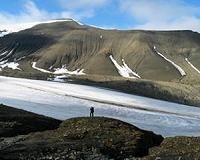| . |  |
. |
for The Hot Zone Moffett Field CA (SPX) Mar 01, 2011 This is the first installment of a new, regular series in The Hot Zone that spotlights the local effects of climate change in different places in the world. As the globe heats up, it's becoming apparent that the effects are not uniform everywhere. Some places are getting wetter, some places drier, species are shifting in different ways with dramatic implications for ecosystems. The predominating force shaping the future of the local environment differs as well. In the oceans, acidification has huge impacts for Great Barrier Reef, while in California, fires are raging with increased frequency and ferocity. Government agencies and academic institutions are beginning to assess local and regional impacts as a way to prepare for the coming change. The aim of this series is to bring climate change home to a particular spot on Earth to understand how life at the species level is adapting or dying. We start off with Lake Tahoe, the largest freshwater lake in the Sierra Nevada range and the largest alpine lake in North America. Tahoe is perhaps best known for its skiing and boating culture, serving as a major tourist destination nearly year round. Tahoe has faced numerous environmental challenges already, including pollution and sediment runoff, invasive species, and impacts from massive development projects along the shore. Add to the lake's troubles that of climate change, which will create a lake unlike that of today, according to a University of California at Davis study written last June for the U.S. Forest Service's Pacific Southwest Research Station. The researchers used various climate and watershed models to simulate Tahoe's response to a range of higher temperatures. The overall trends show that rain will replace snow making for an earlier springtime less flush with snow melt. As such, plants will dry out earlier in the year and will create fuel sources for forest fires. Say good-bye to Tahoe's renowned ski industry. One study from 1999 showed that the Tahoe basin had the highest loss in May snow water - at 54 percent - than any of the 20 other river basins examined. This may be because Tahoe's temperatures have been found warming at a faster pace than the surrounding region. Lake evaporation will also increase due to higher air temperatures, causing the surface level of the lake to dip. Lake Tahoe, the second deepest lake in the U.S. at 1,645 feet, will become simply less of a lake. It will contribute less fresh water to human and wildlife populations. Outflow of water could even cease by the end of the century. Another change is the reduced mixing of lake water, an important way to redistribute nutrients and oxygen for lake species. According to one model, deep mixing will shut down after 2060, leaving nutrient-rich sediment at the bottom of the lake where it's virtually unusable for plants for photosynthesis. Oxygen may reach levels at near zero at the bottom of the lake by 2075, while lower levels of oxygen in other levels of the lake could make the waters inhospitable to salmon and other species. Algae will like the new waters, making the lake less clear and certainly less blue. "Keep Tahoe Blue" - one the most prominent bumper-stickers seen around the lake - may become a slogan of better days.
Spotlight on Queensland: Extreme rains becoming more common The large lowlands and subtropical climate make it particularly prone to tropical cyclones and a new study shows climate change could make matters worse. Janice Lough, a climate scientist of the Australian Institute of Marine Science (AIMS) in Townsville, Queensland, is publishing a paper in the journal Paleoceanography based on research into historic rainfall patterns indicated in growth patterns in near-shore corals dating back to the 17th century. The coral colonies have bands of dense and less dense material in their calcium-carbonate skeletons. The coral bands can be analyzed like tree rings determining patterns of wet and dry years. The corals show that rainfall has increased and become more variable since the 19th century as wet and dry extremes become more frequent. The frequency of extreme events is currently at a peak with very dry years occurring every 7.5 years and very wet years about once every three years. That's compared to 12 and nine year cycles in the late 1600s to late 1700s. The research jives with other studies on Great Barrier Reef corals that support predictions of increased tropical rainfall variability in warmer temperatures. But researchers believe more studies are needed.
Share This Article With Planet Earth
Related Links The Hot Zone Climate Science News - Modeling, Mitigation Adaptation
 Arctic Environment During An Ancient Bout Of Natural Global Warming
Arctic Environment During An Ancient Bout Of Natural Global WarmingSouthampton UK (SPX) Feb 28, 2011 Scientists are unravelling the environmental changes that took place around the Arctic during an exceptional episode of ancient global warming. Newly published results from a high-resolution study of sediments collected on Spitsbergen represent a significant contribution to this endeavour. The study was led by Dr Ian Harding and Prof John Marshall of the University of Southampton's School of Oce ... read more |
|
| The content herein, unless otherwise known to be public domain, are Copyright 1995-2010 - SpaceDaily. AFP and UPI Wire Stories are copyright Agence France-Presse and United Press International. ESA Portal Reports are copyright European Space Agency. All NASA sourced material is public domain. Additional copyrights may apply in whole or part to other bona fide parties. Advertising does not imply endorsement,agreement or approval of any opinions, statements or information provided by SpaceDaily on any Web page published or hosted by SpaceDaily. Privacy Statement |